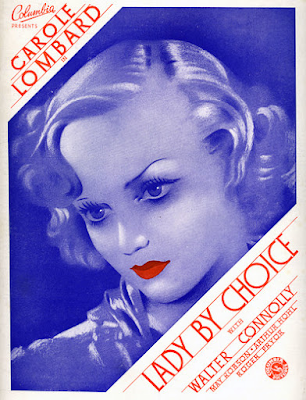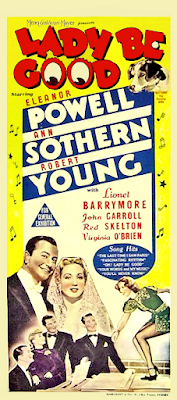Wonderland Burlesque's
Let's All Go To The Movies:
She's A Lady!
Part VII
Sometimes? It takes a lady.
Or so these films would have us believe.
They promise lots of drama, the occasional comedy or musical, and a little bit of dirt!
Let's take a walk down Hollywood Blvd. and shine a light on these magnificent classic films.
This way, if you please. But remember...
Ladies first!
Or so these films would have us believe.
They promise lots of drama, the occasional comedy or musical, and a little bit of dirt!
Let's take a walk down Hollywood Blvd. and shine a light on these magnificent classic films.
This way, if you please. But remember...
Ladies first!
--- ---
This was the first film in which Norma Shearer received top-billing.
Served as the film debut of Joan Crawford, as Norma Shearer's body double. Crawford is the uncredited non-nude body double for Norma Shearer. Whenever both the characters Shearer is portraying are in the same scene, Crawford plays the role that has her backside to the camera. Also, when Maddy and Florence are sitting in the back of the car, that's a split-screen or double exposure of Norma Shearer - until the one shot when they hug. Looking closely at their profiles, a difference in their noses can be seen, and the one on the right is Crawford as Molly. In addition, there are two brief long shots of Crawford as Molly when she first arrives at David's workshop, where Florence, sitting closer to the camera, was already visiting.
Shearer and Crawford later would become rivals, Crawford was jealous of the fact that Shearer was married to MGM production chief Irving Thalberg and, therefore, got most of the roles that Crawford wanted. The two stars later would come head-to-head in The Women (1939).
A dream sequence, which no longer exists, running 42 feet in Reel #4, was filmed in 2-color Technicolor.
The film grossed a total (domestic and foreign) of $326,000: $235,000 from the U.S. and Canada and $91,000 elsewhere, resulting in a profit of $96,000.
--- ---
Lady With A Past
(1932)
A wealthy, proper society girl finds that she's much more popular with men when she pretends to be a 'bad' girl.
Originally cast with rising star Robert Williams. Shortly before production was to begin Williams died from a sudden attack of appendicitis and peritonitis. Ben Lyon replaced him in the role.
David Manners was borrowed from First National for this film, and Ben Lyon was borrowed from Warner Bros.
This film lost $140,000 - according to RKO studio records.
--- ----
Lady By Choice
(1934)
Working titles for this film were Orchids and Onions and Part Time Lady. It had originally been titled Hello, Big Boy but was renamed to capitalize on Lady for a Day (1934). Carole Lombard's character was called Alabam' Lee, who is convicted on a morals charge, was based on fan-dancer Sally Rand.
Lady With Red Hair
(1940)
Based on the life of nineteenth century actress Mrs. Leslie Carter, this American historical drama was directed by Curtis Bernhardt and starsMiriam Hopkins, Claude Rains and Richard Ainley.
Miriam Hopkins played the lead role in Becky Sharp (1935), in which the real Mrs. Leslie Carter had an uncredited role. Louis Payne, the husband of Mrs. Leslie Carter in real life, coached Richard Ainley, who was playing him in the movie.
Lady Be Good
(1941)
Made by Metro-Goldwyn-Mayer and produced by Arthur Freed, this American musical was directed by Norman Z. McLeod and stars Eleanor Powell, Ann Sothern, Robert Young, Lionel Barrymore, and Red Skelton. It was the first of several films Powell made with Skelton. Powell received top billing, but Sothern and Young are the main stars.
Despite her top-billing, not only is Eleanor Powell's role quite minor, but she only dances twice in the entire film - the first of which doesn't come until a full 74 minutes into the picture!
Ann Sothern and Robert Young previously worked together on two other films: Dangerous Number (1937) and Maisie (1939).
Original director Busby Berkeley was replaced during production by Norman Z. McLeod. Berkeley was kept on to direct the musical numbers.
Busby Berkeley utilized a second camera in filming Eleanor Powell's epic dance routine to Fascinatin' Rhythm which tracked the intricate backstage maneuvering by MGM's crew as they detached piece after piece of the mammoth set to enable the camera to capture Berkeley's intricate staging in one uninterrupted take. This behind-the-scenes footage, which illustrates the inner workings of a major Hollywood studio, is included in the documentary That's Entertainment! III (1994).
For Eleanor Powell's dance rendition of the song Oh, Lady Be Good, MGM auditioned several dogs, but none were able to do the required tricks. Finally, Powell bought a dog from a prop man and trained it herself for several weeks so that the dance could be done as she envisioned it.
Originally, any song that appeared in a film was eligible for the Best Song Academy Award. However, Jerome Kern voiced his disapproval when he and Oscar Hammerstein II won for The Last Time I Saw Paris, a song the duo wrote not for this film, but in heartfelt response to the news that the Nazis occupied the beloved European capital. It wasn't until several months after its publication that producer Arthur Freed heard the tune and purchased the rights for Lady Be Good. Kern would be influential in the Academy's ruling that only original songs composed expressly for a film would be eligible for the Best Song Oscar.
--- ---
And that's all for now, folks.
Tune in next time...
Same place, same channel.
Oh, Lady Be Good - Eleanor Powell w/ Buttons
from the 1941 musical Lady Be Good
Fascinatin' Rhythm - Eleanor Powell
from the 1941 musical Lady Be Good

















































































2 comments:
Love everything, especially that tea about them hating each other and stealing each other's husbands. IN REAL LIFE.
XOXO
I think Lombard would be in the true annals of the greats if she had lived.
Post a Comment